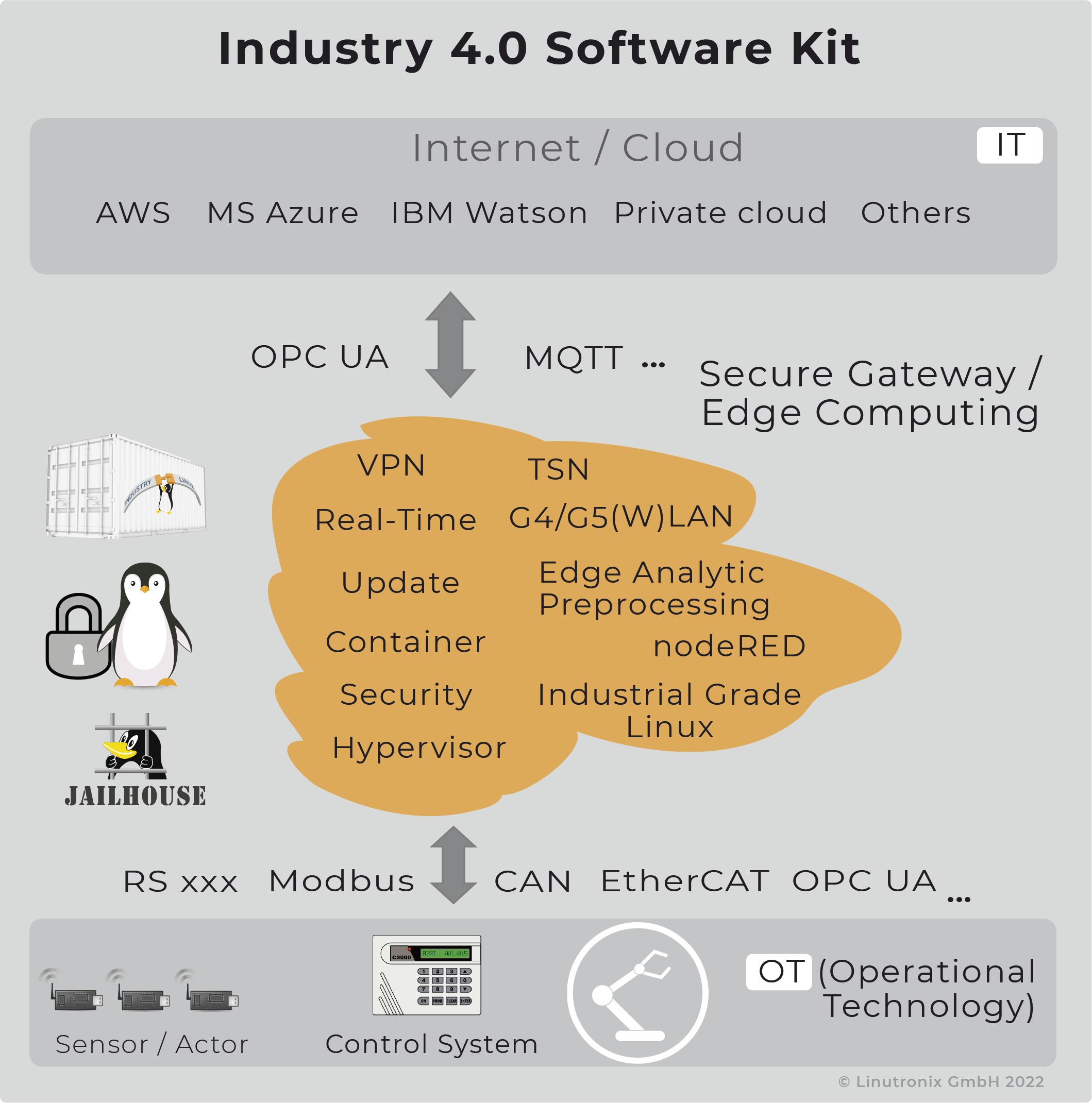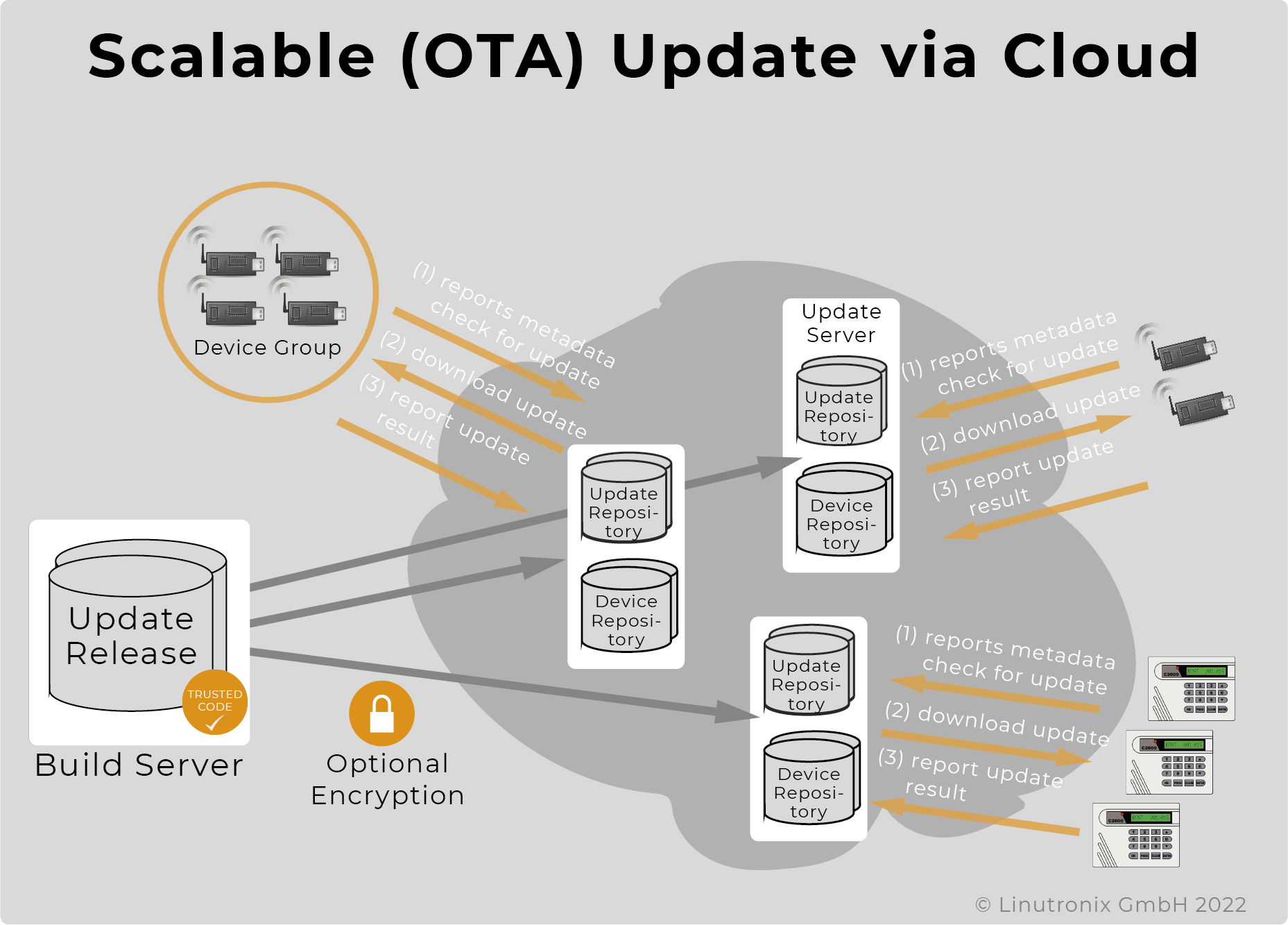Industrial linux
Now it's real(ly) time!

Industrial linux
Now it's real(ly) time!


The IoT is by far the fastest growing segment of IT, with around 20 billion connected devices. It includes devices connected via the Internet, from sensors to assembly lines to 'smart home' devices, and keeps industrial companies, CIOs and data center operators busy.
The challenges are not obvious at first glance. Managing the connected devices and their software is an often underestimated problem, especially for applications that come from the classic control world.
Industrial IoT devices (also called Industry 4.0) can be roughly divided into end devices (sensors, actuators, controllers, operating devices) and gateways or Edge controllers. What they all have in common, provided they have a certain performance level, is that they usually operate under a Linux operating system. Regardless of whether the devices end up connected to a cloud from a well-known provider (Amazon, Microsoft, Google, SAP, Siemens, etc.) or not, they all have the ability to communicate with external devices over the Internet. Therefore, they have many things in common regardless of the dedicated task of the devices. The most important ones are:
a) establish a secure connection of the end devices or gateways/edge controllers to the cloud
b) collect data, if necessary, pre-process it (analysis, preparation, visualization) and transfer it securely to the cloud
c) to be configured via the cloud, to interact with the cloud and finally to receive updates
The following tasks are typical for IIoT devices:
With our Industrie 4.0 software kit, all your IIoT device requirements can be met.
Towards the factory, we support the familiar fieldbuses, but also more recent approaches such as OPC UA (incl. Pub/Sub) and, if already required, TSN. The connection of known PLC controls via S5 / S7, Modbus or Codesys PLCHandler is possible out-of-the-box.

On the cloud side, not only the connectivity to Microsoft or Amazon, Google, etc. is supported thanks to OPC UA, MQTT, OMA Lightweight M2M, Rest API, etc., but also all providers whose interfaces follow open standards.
A (hardened) Linux is used on the devices themselves, preferably also in combination with a hypervisor that is prepared for the secure use of containers. Secure boot, secure communication connections (TLS; VPN), encrypted data and programs can of course be offered. (See also Security and IGL.)
PLC - today almost all PLC solutions are based on a SoftPLC. And very many of them are based on a Linux with Preempt-RT. So nothing is easier than adding a controller. Whether this runs as a native application or in a container or isolated in a virtual machine, that is up to your solution. (-> Link to our results of a PLC in a VM, as soon as available!)
The use of Linux allows, for example, for Edge or Fog controllers, that the desired applications (mostly these are open source programmes) are rolled out as containers. Further information on Eclipse (e.g. Kura, Kapua) and Linux Foundation (e.g. EdgeX Foundry, Appstacle).
The onboarding / provisioning of the devices can be adapted to the application and the hardware used. Regardless of whether it has already been prepared by the chip manufacturer or only at your site during final production, whether special specifications of the chip manufacturer have to be observed, whether authentication is to take place via special servers or via your own server, we have the appropriate solution for every requirement.

Together with you, we will work out an update (OTA) option that can be adapted to your existing structure if necessary. If you do not yet have an update and device management server, we can work with you to create a solution using open source software. Learn more in our OTA update section.
The device management server can be utilised for continuous monitoring of the devices. Corresponding support on the device side for the exchange of information, for example via OPC UA, is then integrated into the BSP.

We offer optional lifetime support for your Industrial Grade Linux as well as for the other components.